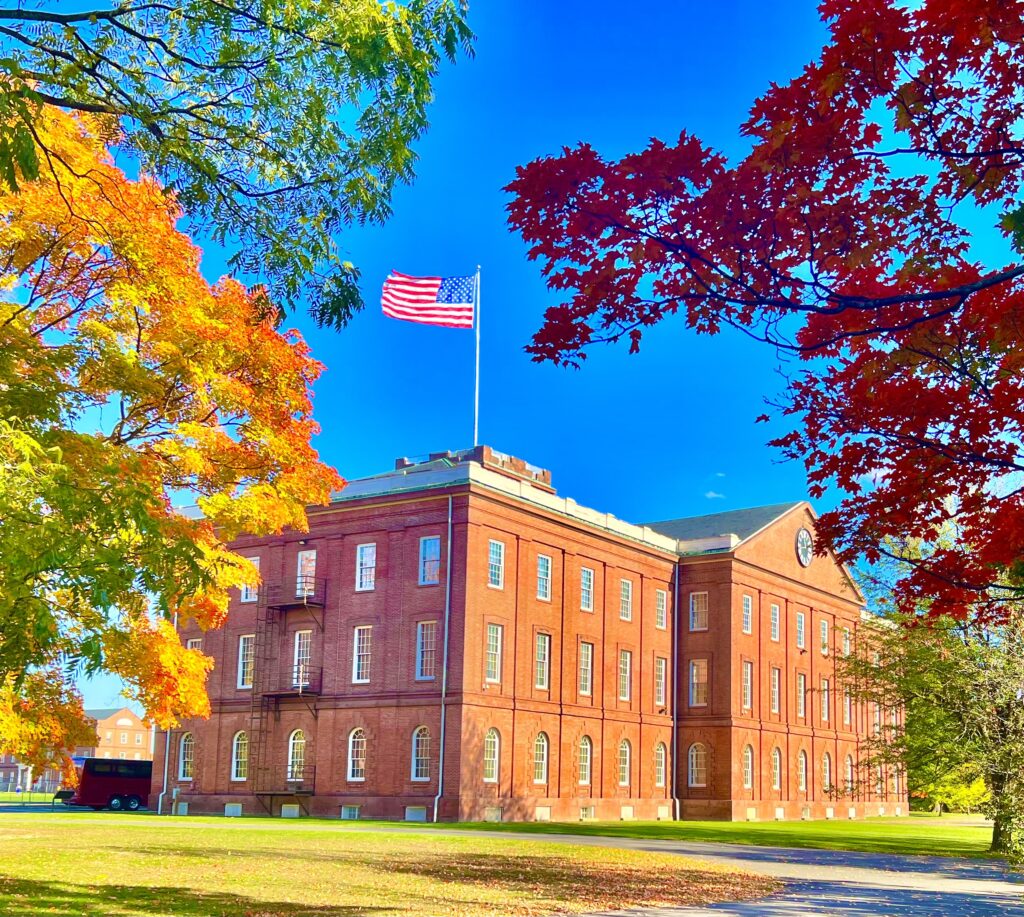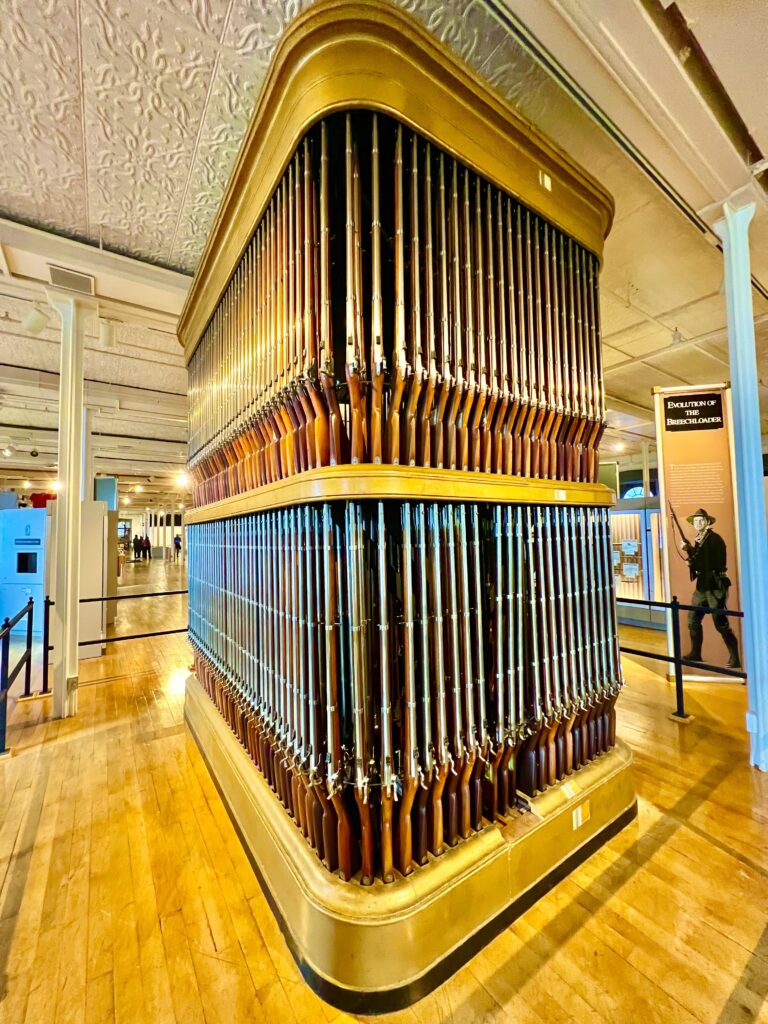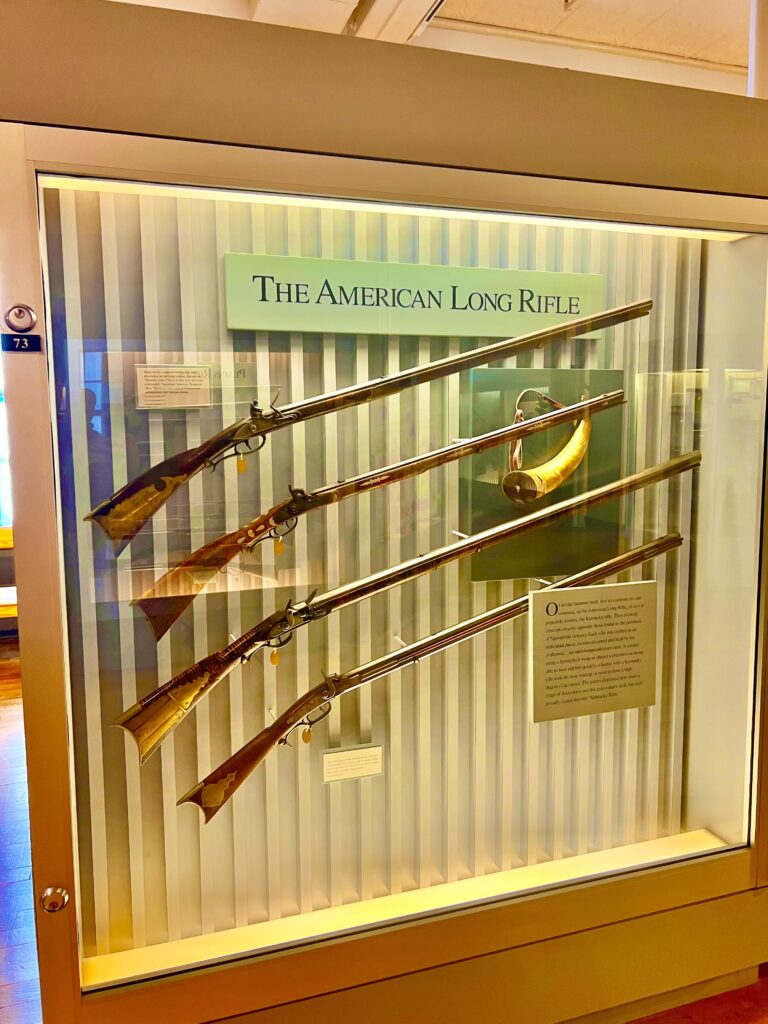Nestled atop a high bluff overlooking the Connecticut River, Springfield Armory National Historic Site preserves America’s very first federal armory. The future armory site was originally established as an arsenal during the American Revolution. In 1794, the newly established federal government decided to establish two federal armories to manufacture muskets, ending our dependence on foreign arms. President Washington selected Springfield as the site for the 1st armory, the 2nd would be established at Harpers Ferry. For nearly 200 years, the Springfield Armory would serve as a laboratory of technological innovation, resulting in breakthroughs benefiting a wide range on manufacturing industries.
“If we are to secure peace one of the most powerful instruments of our rising prosperity it must be known that we are at all times ready for war.”
George Washington, 1793

From 1794 until 1968, the Springfield Armory was the primary center of research, development, and production for weapons employed by the U.S. Army. Springfield Armory National Historic Site is now home to the world’s largest collection of historic American military firearms. If you’re a fan of military history, or firearms in general, the museum is a can’t miss. Walking through the exhibits, you can trace the development of small arms technology from the American Revolution all the way through Vietnam. The collection on display is really impressive, both for the large quantity of historic firearms, as well as the exhibit details, which do an excellent job explaining the significance of each piece.

The museum also explores the armory’s contribution to America’s broader manufacturing efforts. The Springfield Armory became a magnet for skilled workers, and over time the Connecticut River Valley would become a center of precision manufacturing. Manufacturing technologies pioneered at the armory made their way into the production of everything ranging from steamboats to automobiles. Rolls Royce was attracted by the region’s skilled labor force, and opened a factory in Springfield in 1919. Henry Leland, inventor of the Cadillac and Lincoln automobiles, was trained as a machinist at the Springfield Armory during the Civil War. Those are just two examples, but there are many others which demonstrate the profound impact of the Springfield Armory.

Navigating all of the historic weapons displays, it’s hard to pick a favorite. You’ve got the Revolutionary and Civil War technologies, both of which are fascinating. The War of 1812, Indian Wars, and WWI all coincided with technological breakthroughs that fundamentally changed warfare. But for me WWII has to be the most interesting. The museum has an entire section devoted to the invention of the M1 Garand, which General Patton once called, “the greatest battle implement ever devised.” The M1 was developed at the Springfield Armory by John Garand.
Over 6 million M1 rifles would end up being built, most of them by the Springfield Armory. On display are several milestone rifles, including serial number 2,000,000 and 3,000,000. Serial number 1,000,000 is noticeably missing, but it was presented to John Garand. Also on display is the last M1 ever manufactured, serial number 6,084,405, which came off the assembly line in May 1957.
“In my opinion, the M1 Rifle is the greatest battle implement ever devised.”
General George S. Patton, 1945

I really can’t say enough about how much I enjoyed Springfield Armory National Historic Site. If you’re interested in military history, Springfield should absolutely be on your to do list. By National Park standards it’s also pretty easy to get to. The Springfield Armory is 1.5 hours from Boston and only 30 minutes from Hartford, Connecticut. A little out of the way, but if you’re interested, it’s a pretty easy trip to make. As a bonus you can check out the Basketball Hall of Fame, which is also located in Springfield, just 2 miles down the street from the Armory.
https://www.nps.gov/spar/index.htm

